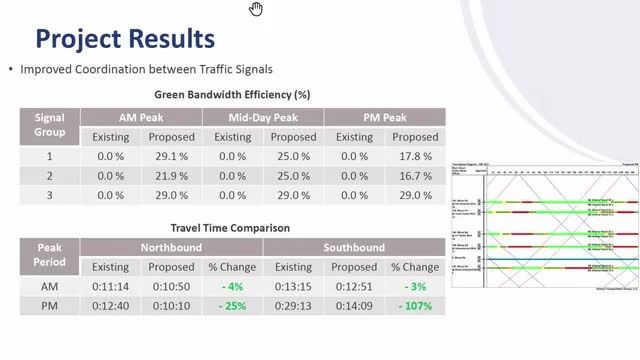Traffic study reveals significant travel time reductions on Highway 1472 corridor
May 21, 2025 | Laredo, Webb County, Texas
This article was created by AI summarizing key points discussed. AI makes mistakes, so for full details and context, please refer to the video of the full meeting. Please report any errors so we can fix them. Report an error »

In the heart of Laredo, Texas, city officials gathered for a Metropolitan Planning Organization Policy Committee Meeting on May 21, 2025, to address pressing transportation challenges that affect daily commuters. As the sun streamed through the windows of the city hall, discussions centered on improving traffic flow and reducing travel times along key corridors.
One of the standout topics was the implementation of automated traffic signal systems designed to optimize intersection performance. Officials revealed that by adjusting parameters for traffic signals, they could significantly enhance the efficiency of major thoroughfares. For instance, during peak morning hours, travel times were reduced by 3 to 4 percent, while the afternoon saw even more dramatic improvements. Northbound travel times were cut by a quarter, and southbound times plummeted from 29 minutes to just 15 minutes. These changes were based on actual field data collected during peak periods, showcasing the potential for technology to alleviate congestion.
However, the conversation did not stop at mere signal timing. Committee members raised questions about the possibility of further enhancements at intersections, such as extending left-turn phases to prevent blocking through lanes. This suggestion sparked a dialogue about the need for a comprehensive approach that includes not just timing adjustments but also potential structural changes to intersections. One member recalled a previously proposed "Super Street" model that aimed to eliminate left turns at certain intersections, highlighting the ongoing debate about the best strategies to manage traffic flow.
As the meeting progressed, it became clear that while the current timing plans were a step in the right direction, there was a consensus that more could be done. The committee acknowledged the heavy congestion experienced by drivers, particularly along the corridor from Verdelite to Killam, where lengthy waits at traffic signals have become a common frustration.
The discussions at this meeting reflect a growing recognition of the need for innovative solutions to tackle Laredo's traffic woes. As officials prepare a final report on their findings, the hope is that these insights will lead to actionable improvements that not only enhance travel times but also contribute to a more efficient and safer transportation network for all residents. The future of Laredo's roads may very well depend on the decisions made in these crucial meetings, as the city strives to keep pace with its growing population and increasing traffic demands.
One of the standout topics was the implementation of automated traffic signal systems designed to optimize intersection performance. Officials revealed that by adjusting parameters for traffic signals, they could significantly enhance the efficiency of major thoroughfares. For instance, during peak morning hours, travel times were reduced by 3 to 4 percent, while the afternoon saw even more dramatic improvements. Northbound travel times were cut by a quarter, and southbound times plummeted from 29 minutes to just 15 minutes. These changes were based on actual field data collected during peak periods, showcasing the potential for technology to alleviate congestion.
However, the conversation did not stop at mere signal timing. Committee members raised questions about the possibility of further enhancements at intersections, such as extending left-turn phases to prevent blocking through lanes. This suggestion sparked a dialogue about the need for a comprehensive approach that includes not just timing adjustments but also potential structural changes to intersections. One member recalled a previously proposed "Super Street" model that aimed to eliminate left turns at certain intersections, highlighting the ongoing debate about the best strategies to manage traffic flow.
As the meeting progressed, it became clear that while the current timing plans were a step in the right direction, there was a consensus that more could be done. The committee acknowledged the heavy congestion experienced by drivers, particularly along the corridor from Verdelite to Killam, where lengthy waits at traffic signals have become a common frustration.
The discussions at this meeting reflect a growing recognition of the need for innovative solutions to tackle Laredo's traffic woes. As officials prepare a final report on their findings, the hope is that these insights will lead to actionable improvements that not only enhance travel times but also contribute to a more efficient and safer transportation network for all residents. The future of Laredo's roads may very well depend on the decisions made in these crucial meetings, as the city strives to keep pace with its growing population and increasing traffic demands.
View full meeting
This article is based on a recent meeting—watch the full video and explore the complete transcript for deeper insights into the discussion.
View full meeting
